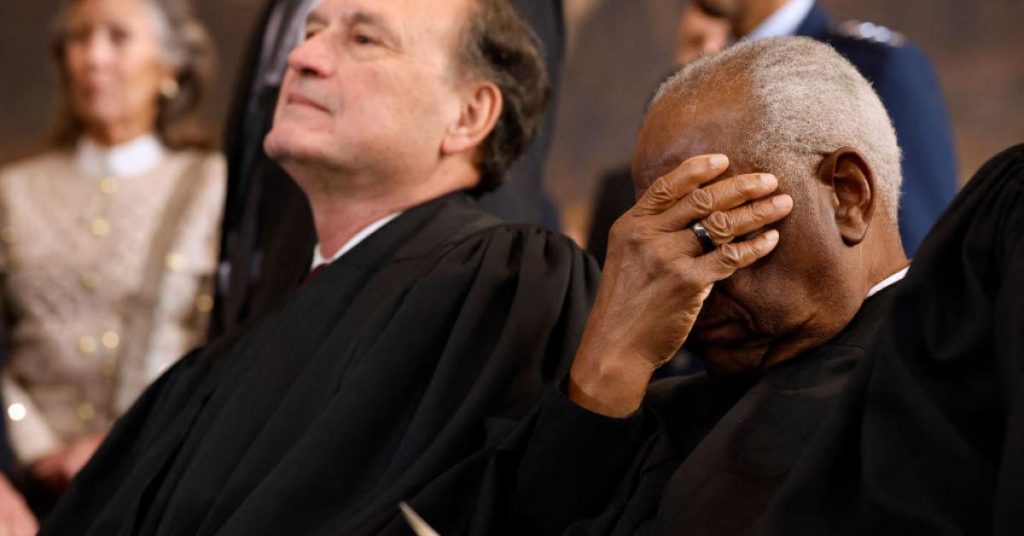The Supreme Court’s decision to ban racial preferences in educational admissions has raised eyebrows, especially when some schools appear to be sidestepping this ruling. Justices Samuel Alito and Clarence Thomas have been vocal about their concerns, questioning why the court isn’t stepping in when high-demand schools like those in Boston seem to be ignoring the ruling. The situation is reminiscent of a similar case in Virginia that the court also chose not to review.
In Boston, there’s a new lawsuit in play, brought by the Boston Parent Coalition for Academic Excellence. Parents of white and Asian-American students, who feel their children were unfairly denied admission to elite schools like Boston Latin, are challenging the new admissions system. This system replaced the previous zip code-based approach with one based on socioeconomic “tiers,” which they argue still results in racial imbalance.
The lawsuit claims that by grouping most white students into one tier, the system effectively reduced their chances of admission compared to their representation in the applicant pool. The coalition argues that this is a form of “disparate impact,” a term used by the 1st U.S. Circuit Court of Appeals. They believe the court should order admissions based on race as a remedy for this perceived injustice.
Chris Kieser, representing the coalition, insists that Boston Public Schools are disguising racial quotas behind socioeconomic labels. He emphasizes that the Equal Protection Clause prohibits discrimination, whether it’s overt or hidden. The defendants, including the Boston School Committee and Superintendent Mary Skipper, have been granted more time to respond to the allegations.
Meanwhile, in Northern Virginia, Thomas Jefferson High School for Science and Technology is also under scrutiny. Justice Alito has criticized his colleagues for allowing what he sees as intentional racial discrimination at the school. The U.S. Department of Education is investigating Fairfax County Public Schools for allegedly discriminating against Asian Americans in their admissions policy.
Virginia’s Governor Glenn Youngkin has been involved, urging the state Attorney General to investigate these practices. Parents have accused the school of withholding academic achievement awards, potentially affecting college admissions for Asian-American students. Similar allegations have surfaced at other Fairfax County high schools.
The Boston lawsuit highlights Boston Latin’s historical significance, being the oldest continually-operating school in America. Until 2020, admissions were based solely on GPA and exam scores, but the district shifted focus to reduce the number of white and Asian-American students. The change came shortly after George Floyd’s death, with the school board pushing for more diverse admissions criteria.
The lawsuit points out how school officials openly discussed their desire to alter the racial makeup of these schools. They introduced a plan where 80% of seats were allocated based on zip code, favoring areas with fewer white and Asian-American students. This meant students from these demographics faced higher GPA requirements for admission.
Justice Alito’s dissent notes that Ibram X. Kendi, a prominent antiracism advocate, supported the new admissions plan. During a virtual meeting, the school board chairman was caught mocking Asian-American parents opposed to the “zip code quota plan.” The Boston Globe reported that other board members were caught exchanging racist messages during the meeting.
Despite the changes, the 1st Circuit Court found that these actions didn’t violate the law as white and Asian-American students were still overrepresented in admissions. Alito’s dissent criticizes this interpretation, arguing it misapplies a 1977 Supreme Court precedent. He contends that evidence of disparate impact should not be seen as essential for an equal protection claim.
A task force has been tasked with crafting a new admissions policy that builds on the zip code plan. The aim is to enhance racial, socioeconomic, and geographic diversity. The current tier system, first used in the 2022-2023 school year, divides seats among the top students in each tier without a reservation for GPA alone.



